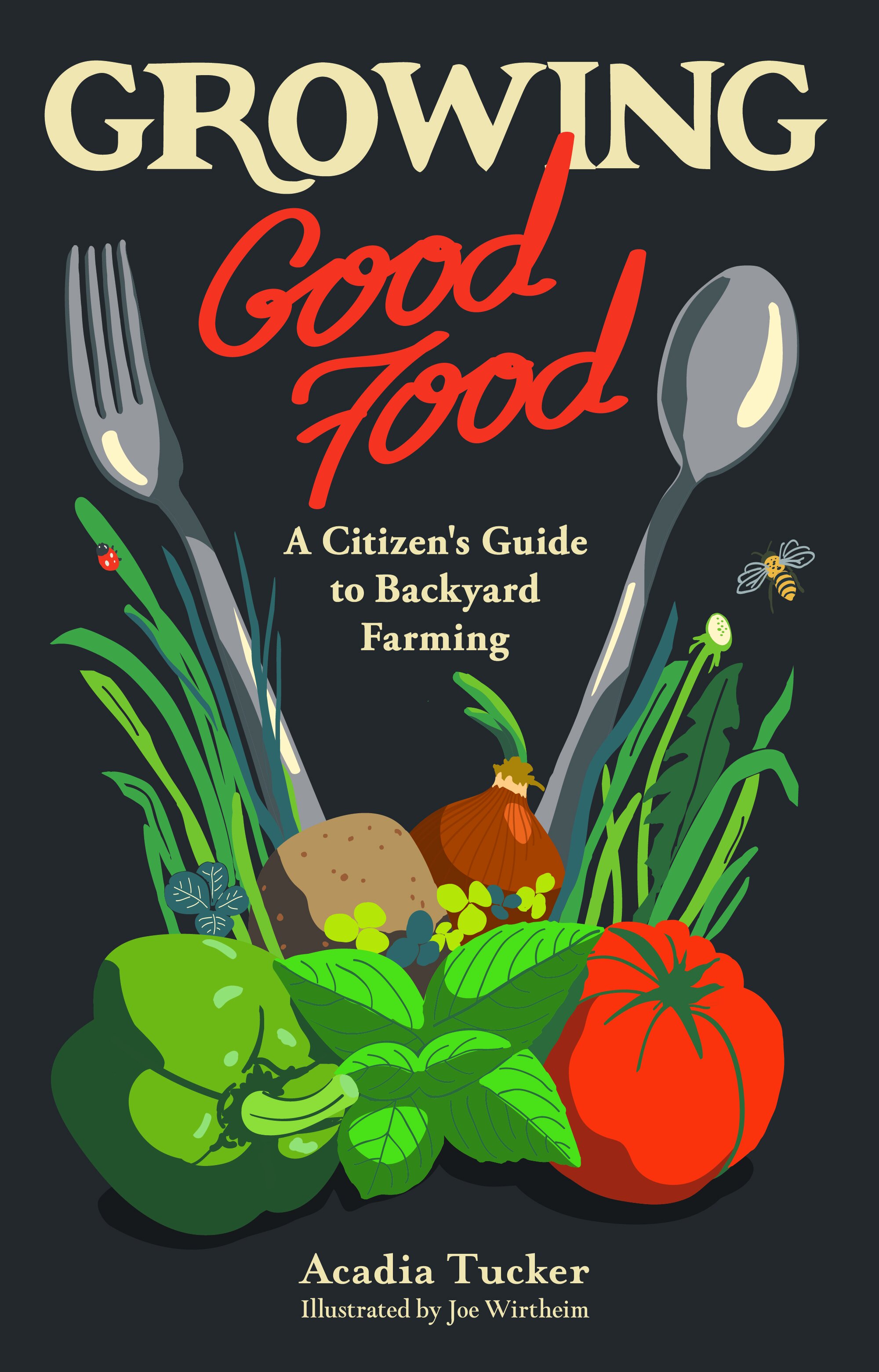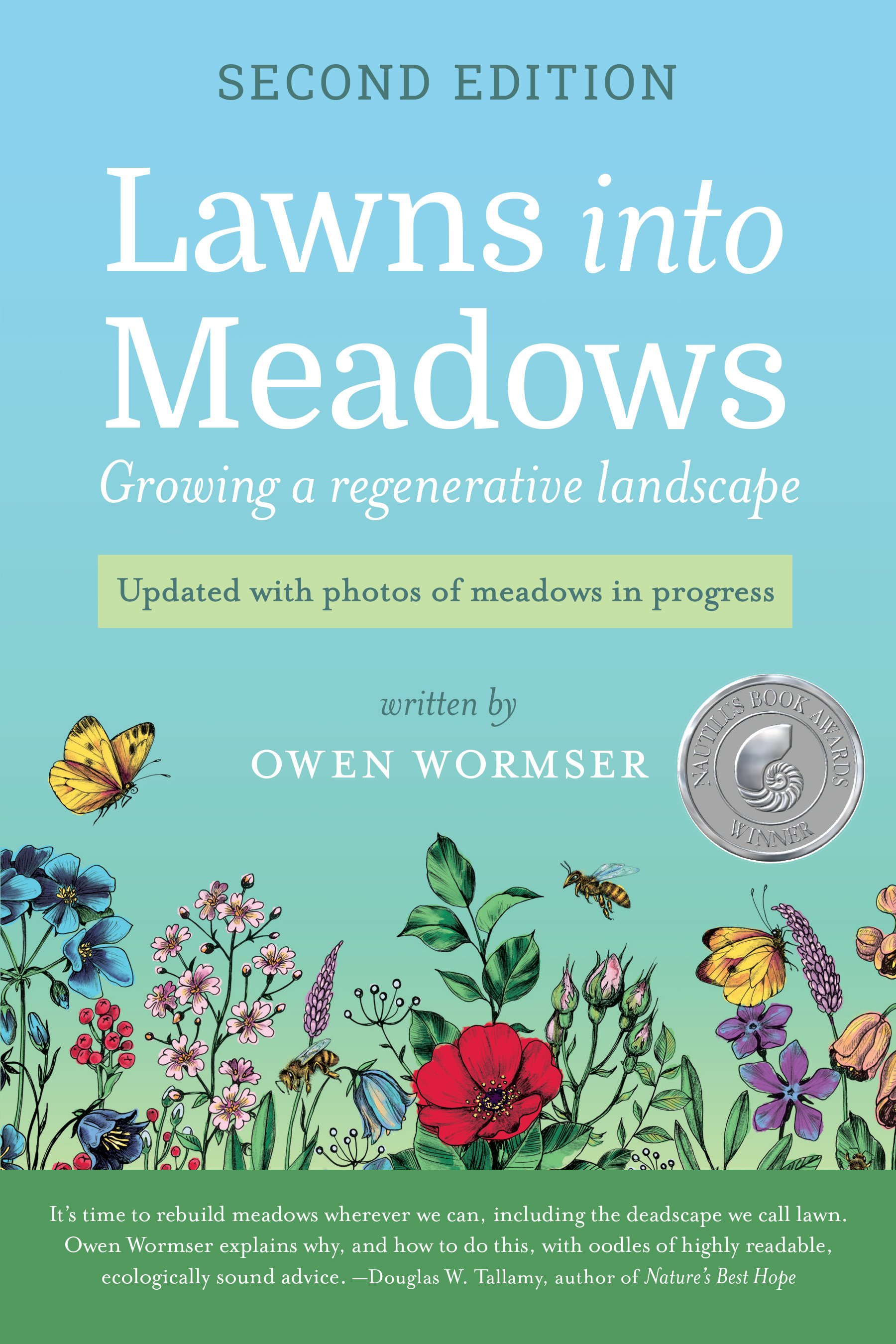How to start a Meadow
A Massachusetts home’s turf lawn (left) is transformed into a flourishing meadow (right), pictured three years later. This colorful meadow garden features native plants like anise hyssop, purple coneflower, and orange coneflower.
You’ve likely heard that switching to a plant-based diet, flying less, and composting can all help to reduce your carbon footprint. But did you know that swapping out turf-grass lawns for meadows can have similar environmental benefits?
“What makes Wormser’s book a standout is that it’s among the very few books on meadows that details how to grow one.”
Though they might look healthy, grass lawns actually degrade the ecological health of our planet and contribute to global warming. Maintaining these unnatural landscapes requires frequent mowing, fertilizer and pesticide use, and leaf blowing, which all have significant carbon outputs.
“Lawns have become something of a national obsession [in the United States],” writes regenerative landscape designer Owen Wormser in his book, Lawns Into Meadows. “We waste an enormous amount of resources every year maintaining a closely cropped area of turf that totals more than 63,000 square miles, about the size of Washington State.”
Traditional grass lawns are also thirsty because they need regular watering. Americans consume eight billion gallons of water each day for purposes related to “outdoor water use,” and most of this water goes towards landscape irrigation, according to the Environmental Protection Agency. The average US household uses more water outdoors than for showering and washing clothes combined.
Because they are more robust, require less maintenance, and have a smaller carbon footprint, transforming your lawn into a meadow is a compelling solution to the problems posed by grass lawns.
Over the course of three years, this residential yard in western Massachusetts morphed from a tilled landscape ready for seeding into a robust, filled-out meadow.
Awareness of the drawbacks of lawns appears to be growing. Since Wormser’s book was released in 2020, it has been featured in The New York Times, Martha Stewart, Better Homes & Gardens magazine, and on NPR and a multitude of podcasts. Wormser himself has led many dozens of workshops for different gardening groups and eco-oriented conferences. The book also earned a Nautilus award, which calls out “books for a better world.”
In short, meadows are having a moment. What makes Wormser’s book a standout is that it’s among the very few books on meadows that details how to grow one.
WHAT IS A MEADOW?
To create this meadow garden, volunteers planted 750 native perennials near the Northampton City Hall, turning a previously unusable steep slope into a beautiful and ecologically beneficial spot.
“Meadow’ isn’t a very technical term,” explains Wormser. “They’re areas that are dominated by grasses with flowering perennial herbaceous species in them that aren’t overtaken by trees and shrubs.”
Meadows are part of the grassland family, alongside prairies, steppes, plains, and savannahs. Meadow gardens, like the Northampton City Hall patch pictured (right), are smaller versions of traditional meadows.
Monarch butterfly caterpillars munch on a plant leaf. Planting native species in your meadow, such as milkweed, helps to support this critically endangered pollinator.
From an environmental standpoint, meadows have considerable potential for sinking carbon. Established grasslands—including meadows—are able to store 70 percent more carbon when compared to monocultures like turf-grass, according to a study published by the Nature Communications Journal.
“While most studies focus on the carbon-storing powers of oceans and forests, the research on grasslands finds they’re also a cost-effective and scalable solution for carbon absorption,” says Wormser.
In addition to having a much smaller environmental footprint, meadows also support pollinators, insects, and birds. It doesn’t hurt that meadows happen to be stunning.
HOW DO I GET STARTED?
Choosing to plant seeds, plugs, or both is one of the decisions that you’ll have to make while planning your meadow. Smaller meadow gardens are better suited to the more labor-intensive plugs. For bigger meadows, dispersing seeds makes more sense.
Becoming a meadow expert overnight is unlikely. As with any skill, it takes time to learn. Wormser advises that readers start small. Picking a small plot, for example 5-by-5 feet, is a great way to test which plants will thrive. “That's going to inform you and help you understand what works,” says Wormser. “And then you can go on to a bigger project.”
Important next steps covered in his book include testing your soil to see if it’s sandy, wet, or rich, picking plants that will grow well in your soil, aiming for flowers and grasses that are similar in height (because it looks better), and considering which color wildflowers will go well together.
HOW LONG DOES A MEADOW TAKE TO GROW?
This sequence illustrates the evolution of a meadow from left to right: the initial turf-grass lawn prior to planting, the tilled yard with young meadow plants, the landscape after one year, and two years later.
Meadow-making is a unique type of gardening that requires a pinch of delayed gratification and a dash of restraint. “This is a different kind of gardening,” says renowned gardening writer Margaret Roach, who has interviewed Wormser multiple times for her podcast and for an article in The Times. “Meadow-making is an exercise in patience and restraint and in accepting that it has a life of its own.”
It can take two, three, or even five years for a meadow to reach full maturity and become self-sustaining. Wormser explains that a vital part of the meadow-making process is letting go. “Basic maintenance aside, once you’ve designed and planted your meadow, your primary job is to give it the space and time it needs to reveal its own character.”
WHAT OBSTACLES MIGHT I ENCOUNTER?
Adding signage, like this “Future Native Plant Landscaping” signpost, can be a helpful way to explain to curious neighbors and onlookers that a meadow is in progress.
Although weeds might seem like the biggest obstacle to meadow-making, local ordinances or your neighbors’ lack of awareness may actually be a greater challenge.
If the area you live in has strict rules regarding what lawns should look like, Wormser recommends activism and outreach as a potential solution.
“If you do your research and can build a sound ecological case for your meadow, you may be able to apply for a variance that allows you to convert your lawn, or even change your local laws,” he says.
If you’re instead worried about what your neighbors might think of the changes to your yard, putting up a sign may help to minimize confusion.
Says Wormser, “One man I worked with headed off problems by putting up a sign that said Meadow in Progress.” He printed and laminated it at a local copy shop after noticing several neighbors stopping and staring at his newly tilled yard. From then on, he experienced only support for his new meadow.
Julia Nagel is Stone Pier Press Fellow based in Ithaca, NY. All images in this story are courtesy of Owen Wormser.















